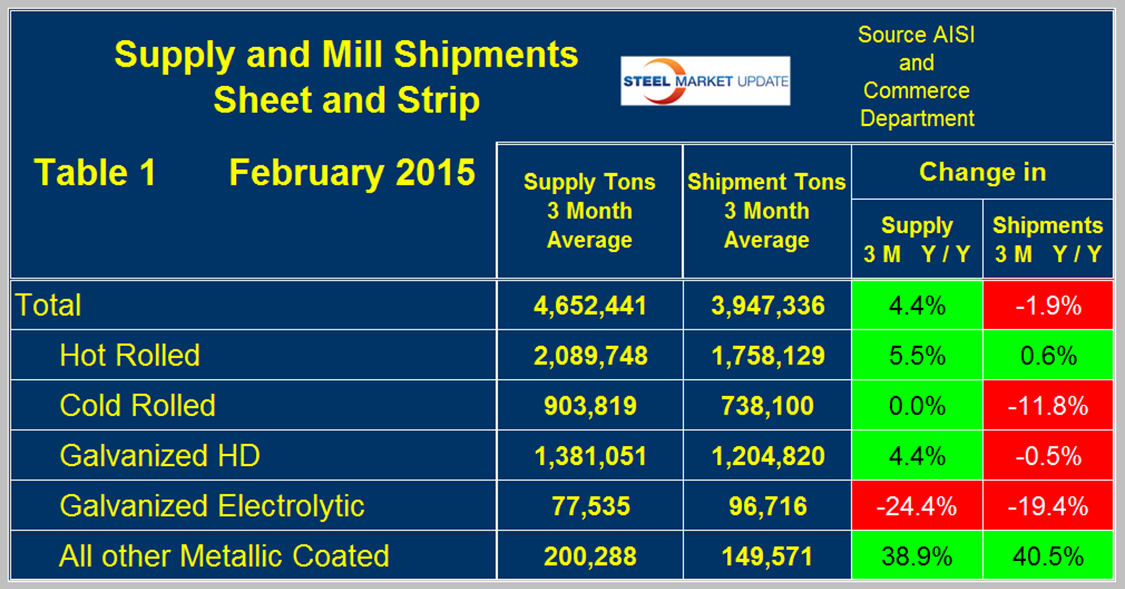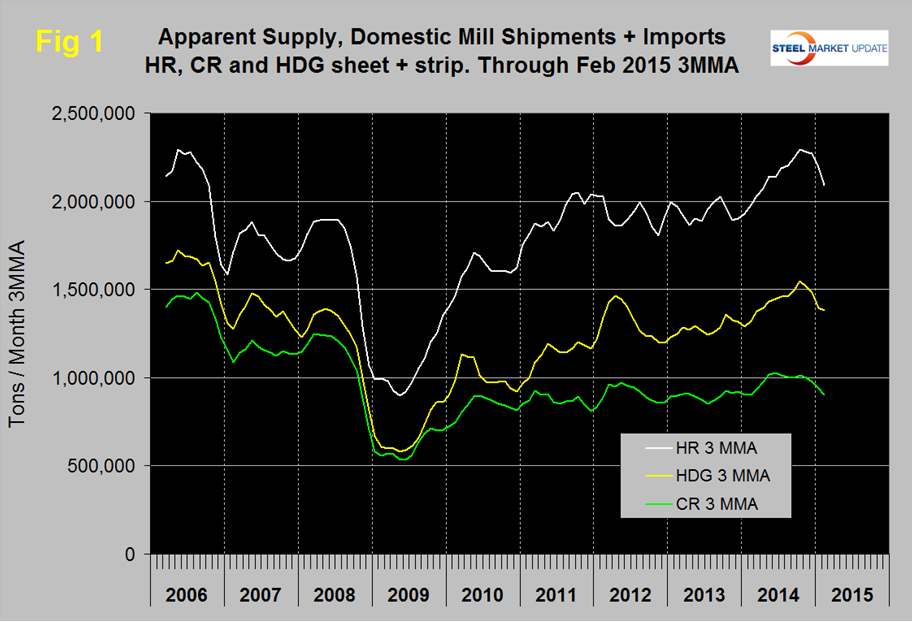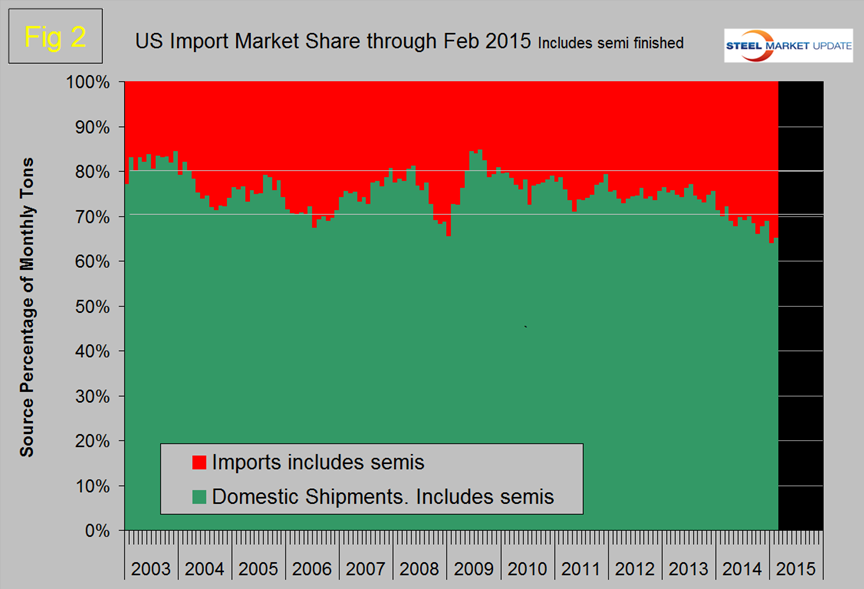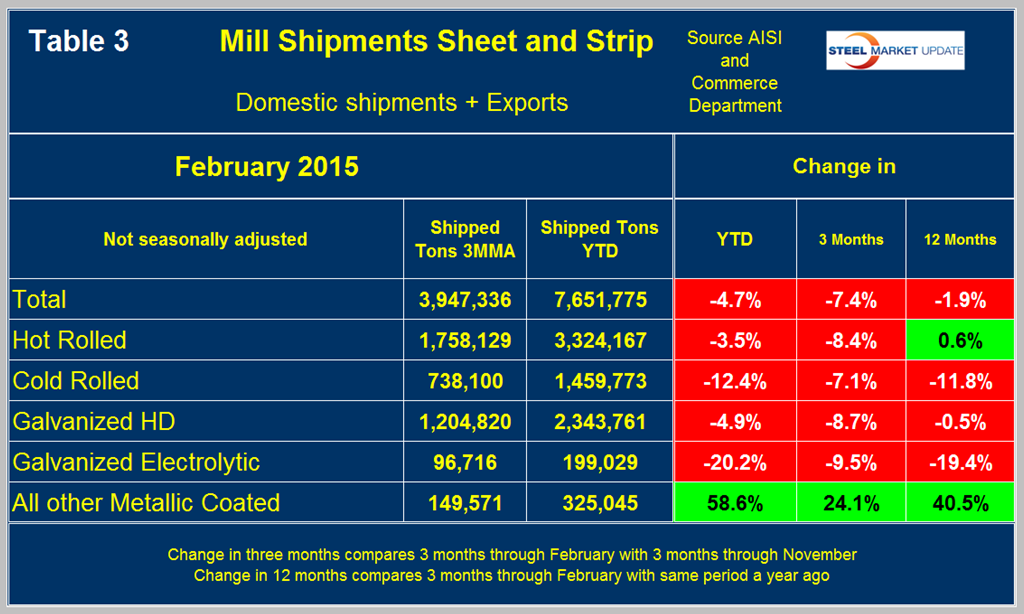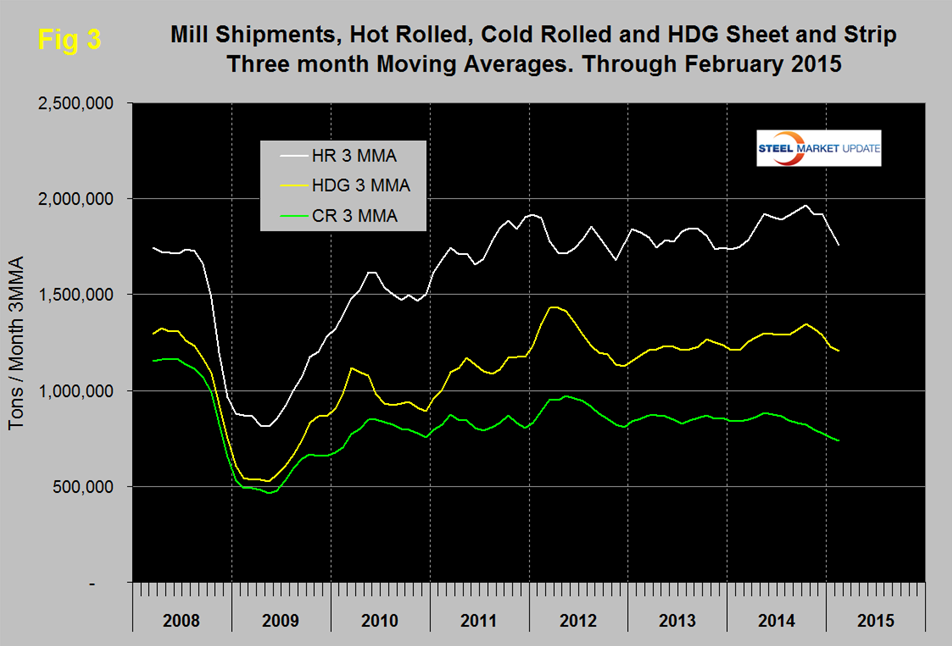Economy

Shipments and Supply of Sheet Products through February 2015
Written by Peter Wright
April 10, 2015
This report compares domestic mill shipments and total supply to the market to enable a side by side comparison and the degree to which imports have absorbed demand. Sources are the American Iron and Steel Institute and the Department of Commerce with analysis by SMU. Table 1 shows both supply and mill shipments of sheet products, (shipments includes exports) side by side as a three month average for the periods December 2014 through February 2015 year over year. Comparing these two periods total supply to the market was up by 4.4 percent as mill shipments were down by 1.9 percent. In other words, imports took all of the demand growth and then some. Table 1 breaks down the total into the individual sheet products.
The very strong supply and shipment results for other metallic coated products (mainly Galvalume) was driven by an extremely strong January in which both imports and domestic mill shipments were double the volume of both December and February. Domestic cold rolled came under the most pressure in three months through February with zero growth is supply but a decline of 11.8 percent in mill shipments. At first glance the numbers for electro-galvanized (EG) look strange with supply being less than shipments. This is because EG still has a positive trade balance where exports exceed imports. Both supply and shipments of EG are down significantly from the same period a year ago. A review of supply and shipments separately for individual sheet products is given below.
Apparent Supply is a proxy for market demand and is defined as domestic mill shipments to domestic locations plus imports. In the three months December 2014 through February 2015 average monthly supply of sheet and strip was 4,652,441 tons, down by 8.1 percent from the previous three month period, September through November 2014 but up by 4.4 percent year over year. Table 2 shows the change in supply by product on this basis plus YTD which includes January plus February. All individual products except Galvalume declined in three months through February compared to three months through November.
Figure 1 shows the long term supply picture for the three major sheet and strip products, HR, CR and HDG since January 2006.
All three products declined in February, particularly hot and cold rolled after being in higher demand in late last year than at any time since the recession. Hot band was range bound for 2 ½ years until April 2014 when it broke out and advanced through October followed by a small decline in November and December and a more rapid decline in January and February. Cold rolled supply fell below a million tons to 977,452 tons in December (3MMA) after being above that threshold for six of the previous seven months and continued to decline in January and February. Prior to this recent past the last time cold rolled exceeded a million tons was in October 2008 as we prepared to go over the cliff. Hot dipped galvanized had a strong bump in H1 2012, declined in H2 2012 and steadily improved for 22 months with a small decline in November and December and a more rapid decline in January. The decline slowed in February. In three months through February the supply of HDG averaged 1,381,051 tons/month.
Figure 2 shows import market share of all steel products including semi-finished. There have been only three periods since 2003 when the domestic mills have commanded less than 70 percent of the market and of those three periods the current one is the most sustained.
Mill Shipments Table 3 shows that total shipments of sheet and strip products including hot rolled, cold rolled and all coated products were down by 7.4 percent in three months through February compared to three months through November.
On this basis all products except ‘Other metallic coated’ were down. The same is true of YTD through February year over year. As mentioned above, mill shipments of other metallic coated products had a huge surge in the single month of January with a simultaneous surge in imports. Figure 3 shows the shipment situation by product since January 2008. All three of the major product groups declined in December, January and February.

Peter Wright
Read more from Peter WrightLatest in Economy

Architecture billings continue to slide in March
Architecture firms said billings continued to decline in March, according to the latest Architecture Billings Index (ABI) released by the American Institute of Architects (AIA) and Deltek.

Beige Book shows concerns about trade policy
Manufacturing was mixed, but two-thirds of districts said activity was little changed or had declined.

New York state manufacturing index drops again in April
Firms were pessimistic, with the future general business conditions index falling to its second lowest reading in the more than 20-year history of the survey

Construction adds 13,000 jobs in March
The construction sector added 13,000 jobs, seasonally adjusted, in March, but tariffs could undermine the industry.

Supply chains, end-users brace for impact from tariffs
Supply chains are working through what the tariffs mean for them

